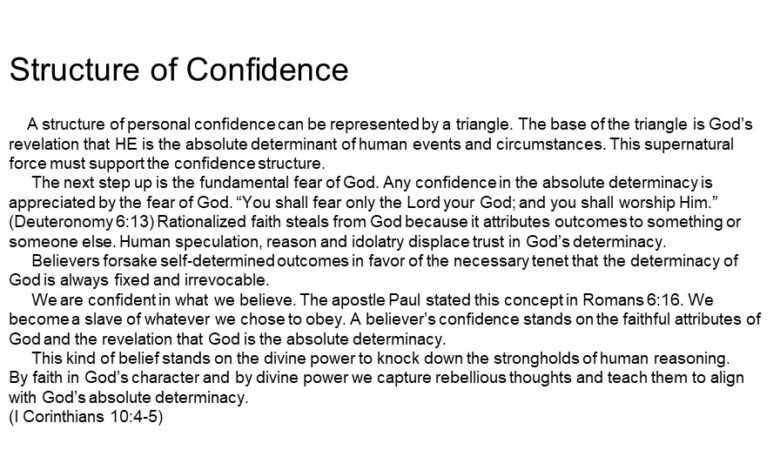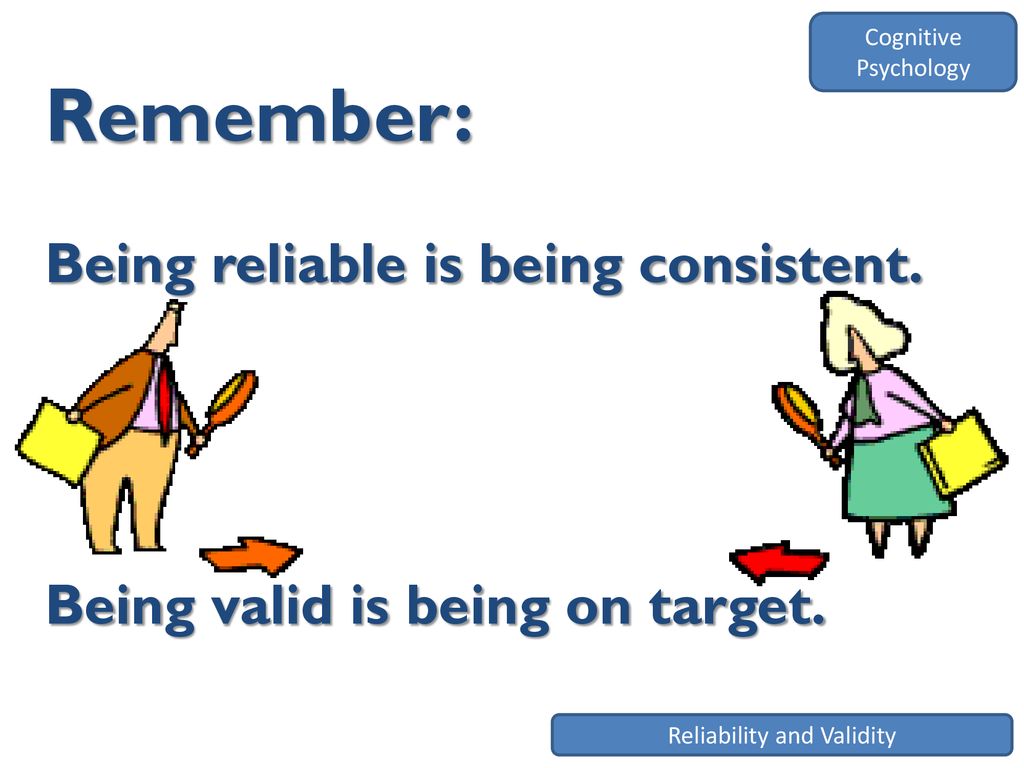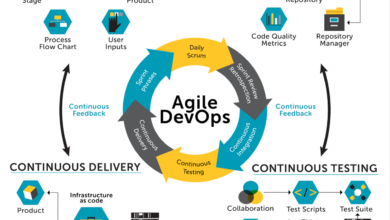
Defining and Understanding Trust Assurance
Defining and understanding trust assurance – Defining and understanding trust assurance is more than just a theoretical exercise; it’s the bedrock of successful relationships, whether personal or professional. We rely on trust in every aspect of our lives, from choosing a doctor to making online purchases. But how do we truly
-know* we can trust someone or something? This exploration delves into the multifaceted nature of trust, examining its different forms and the mechanisms that build and reinforce it.
We’ll unravel the complex interplay between trust and assurance, exploring how evidence, reputation, and transparency all play a crucial role in fostering confidence and security.
We’ll journey through various contexts, from interpersonal relationships to the digital world, examining how assurance mechanisms work in practice. We’ll look at the potential pitfalls – the ways trust can be broken, and the devastating consequences of that breach. Ultimately, this journey aims to equip you with a deeper understanding of how trust is built, maintained, and sometimes, tragically, lost.
Defining Trust
Trust is a fundamental aspect of human interaction, underpinning relationships, collaborations, and societal structures. It’s more than just a feeling; it’s a complex psychological and social construct involving risk, vulnerability, and the expectation of positive outcomes. Understanding its multifaceted nature is crucial for navigating personal and professional life effectively.
Trust: A Multifaceted Definition
Trust can be defined as a confident expectation that another party will act in a way that benefits or does not harm the trusting party, even in the absence of direct control or monitoring. This expectation is based on a combination of factors, including past experiences, perceived competence, integrity, and benevolence of the trusted party. It involves a degree of risk, as the trusting party relinquishes some control and makes themselves vulnerable to potential negative consequences.
The strength of trust varies depending on the context and the individuals or institutions involved.
Types of Trust
Trust manifests in various forms, depending on the nature of the relationship. Interpersonal trust, for example, refers to the confidence we place in individuals we know personally, such as family, friends, and romantic partners. This trust is typically built over time through shared experiences and demonstrated reliability. Institutional trust, on the other hand, refers to the confidence we place in organizations and institutions, such as governments, banks, and corporations.
This type of trust is often based on perceived legitimacy, competence, and adherence to rules and regulations. Societal trust encompasses the overall level of confidence individuals have in the integrity and fairness of the broader societal system, including its institutions and fellow citizens. High levels of societal trust are associated with greater social cohesion and economic prosperity.
Trust vs. Related Concepts
While often used interchangeably, trust differs from related concepts like confidence, reliance, and belief. Confidence is a feeling of self-assurance, while reliance is a dependence on something or someone. Belief is an acceptance that something is true, regardless of evidence. Trust, however, encompasses all three but adds the crucial element of vulnerability and risk. You can be confident in your abilities without trusting anyone, rely on a system without trusting its operators, and believe in a principle without trusting those who claim to uphold it.
Defining and understanding trust assurance is crucial in today’s digital landscape, especially with the increasing reliance on cloud services. A key player in bolstering this trust is cloud security posture management (CSPM), and understanding its role is vital. For a deep dive into a leading CSPM solution and its impact, check out this article on bitglass and the rise of cloud security posture management ; it’s a great resource for grasping how effective CSPM contributes to overall trust assurance.
Ultimately, strong security practices directly influence our confidence in data integrity and system reliability.
Trust necessitates a leap of faith, an acceptance of potential risk based on an assessment of the other party’s character and intentions.
A Conceptual Model of Trust
A conceptual model of trust could be visualized as a triangle with three vertices representing its key components: Competence (the ability of the trusted party to deliver on their promises), Benevolence (the goodwill and intention of the trusted party to act in the best interests of the trusting party), and Integrity (the honesty and adherence to ethical principles of the trusted party).
The strength of trust is determined by the strength of each of these three components. A high level of trust requires a strong foundation in all three areas. For example, a highly competent but dishonest individual (high competence, low integrity) might inspire reliance but not trust. Similarly, a benevolent but incompetent individual (high benevolence, low competence) may inspire sympathy but not trust.
Only when all three elements are present can robust trust develop.
Defining Assurance
Assurance, in the context of trust, is the confidence that a promise, claim, or statement is true and reliable. It’s the bridge between a statement of intent and the actual outcome, providing evidence that the intended action will be carried out as promised and that the promised result will be achieved. Without assurance, trust remains fragile and susceptible to doubt.
It’s the mechanism that transforms mere belief into a strong, dependable expectation.Assurance mechanisms actively contribute to the building and maintenance of trust. They function by providing evidence, validation, or guarantees, reducing uncertainty and risk. The more robust the assurance, the greater the level of trust that can be established.
Assurance Mechanisms in Different Contexts
Assurance mechanisms take various forms depending on the context. In finance, a credit rating agency’s assessment provides assurance about the creditworthiness of a borrower, influencing investors’ trust. Technological systems utilize encryption and digital signatures to assure data integrity and authenticity, building trust in online transactions. Interpersonally, reputation and past behavior serve as assurance mechanisms, influencing the level of trust we place in individuals.
A friend’s consistent reliability builds assurance in their future actions.
Levels and Types of Assurance
Assurance exists on a spectrum. Evidence-based assurance relies on demonstrable facts, figures, and verifiable data. For instance, a company’s audited financial statements provide evidence-based assurance to investors. Reputation-based assurance, on the other hand, stems from an entity’s past performance and perceived credibility. A brand with a long history of quality products builds trust through its reputation.
Other types include certification (ISO 9001 for quality management), guarantees (warranties on products), and third-party verification (audits of environmental impact). The level of assurance required varies greatly depending on the context and the potential consequences of a breach of trust. A higher level of assurance is typically needed for high-stakes situations, such as financial transactions or medical procedures.
Comparison of Assurance Mechanisms
| Mechanism | Strengths | Weaknesses | Examples |
|---|---|---|---|
| Evidence-based (e.g., audit reports) | Objective, verifiable, quantifiable | Can be expensive, time-consuming, may not capture all aspects | Financial audits, scientific research publications |
| Reputation-based (e.g., brand reputation) | Easy to understand, readily available | Subjective, can be manipulated, may not be reliable in new contexts | Brand loyalty, testimonials |
| Certification (e.g., ISO certifications) | Standardized, independent verification | Can be costly, may not reflect current practices | ISO 9001, LEED certification |
| Guarantees (e.g., product warranties) | Provides legal recourse, builds confidence | Limited scope, may not cover all potential issues | Product warranties, money-back guarantees |
The Interplay Between Trust and Assurance
Trust and assurance are intrinsically linked; they’re not independent entities but rather two sides of the same coin. Assurance acts as the foundation upon which trust is built, providing the evidence and confidence needed to foster strong, reliable relationships, whether between individuals or organizations. Without sufficient assurance, trust remains fragile and susceptible to erosion.Assurance contributes to the development and strengthening of trust by reducing uncertainty and risk.
When we have verifiable evidence supporting a claim or a promise, we’re more likely to believe it and, consequently, to trust the source. This is particularly true in complex situations where the consequences of misplaced trust can be significant. For example, the rigorous security protocols and encryption employed by a financial institution provide assurance to customers, fostering their trust in the safety of their deposits.
The more robust the assurance mechanisms, the stronger the trust that develops.
Assurance Assessment Processes
Individuals and organizations assess the level of assurance offered through various methods, often depending on the context. In personal relationships, trust might build gradually through consistent positive experiences and demonstrations of reliability. In business transactions, however, a more formal approach is often necessary. This can involve examining certifications, independent audits, testimonials, and reviews, as well as scrutinizing the reputation and track record of the involved parties.
For example, a consumer might check online reviews before purchasing a product from an unfamiliar online retailer. The presence of positive reviews from multiple sources offers a level of assurance, increasing the likelihood of a purchase. Government regulations and industry standards also play a significant role in providing assurance, particularly in sectors like finance and healthcare where public trust is paramount.
Transparency and openness are also key; organizations that openly communicate their processes and policies tend to inspire greater trust than those that operate in secrecy.
Factors Undermining Trust Despite High Assurance
Even when high levels of assurance are present, trust can still be undermined. Several factors can contribute to this. Past negative experiences, regardless of current assurances, can create lasting skepticism. For instance, a person who has been previously scammed online might be hesitant to trust even secure e-commerce platforms, despite the presence of robust security measures. Similarly, a lack of empathy or perceived manipulative behavior from an organization can erode trust, even if its processes are demonstrably secure.
Poor communication or a failure to address customer concerns effectively can also damage trust. Furthermore, even with strong assurance, unforeseen circumstances or systemic failures can occur, leading to a breach of trust. For example, a bank with robust security systems might still experience a data breach due to a sophisticated cyberattack, thus undermining customer trust despite prior high levels of assurance.
Finally, biases and pre-existing beliefs can significantly influence an individual’s perception of assurance, leading to distrust even in the face of overwhelming evidence.
Defining and understanding trust assurance is crucial in software development, especially when considering the security implications. Building robust applications requires a solid foundation, and this is where the advancements in domino app dev the low code and pro code future become incredibly relevant. These innovative approaches can significantly impact how we design for trust, impacting the overall security and reliability of the final product, further strengthening our understanding of trust assurance.
Trust and Assurance in Online Transactions
The following flowchart illustrates the relationship between trust and assurance in the context of online transactions:[Descriptive Flowchart]Imagine a flowchart with two main branches: “High Assurance” and “Low Assurance.”The “High Assurance” branch begins with the user verifying the website’s security (HTTPS, padlock icon). This leads to the user seeing positive reviews and testimonials. This further leads to the user feeling confident and completing the transaction.
The end result is “Trust Established.”The “Low Assurance” branch starts with the user noticing a lack of security indicators (no HTTPS). This leads to the user seeing negative reviews or no reviews at all. The user then feels apprehensive and decides not to complete the transaction. The end result is “Trust Not Established.” Both branches show that assurance directly impacts the level of trust established in the transaction.
Building Trust and Assurance

Building trust and assurance is a crucial process in any relationship, whether personal or professional. It’s not a one-time event but an ongoing effort requiring consistent action and commitment. This involves understanding the factors that contribute to trust and implementing strategies to cultivate it effectively. This section will explore practical strategies for building and maintaining trust and assurance in various contexts.
Strategies for Building Trust and Assurance
Effective trust-building strategies vary depending on the context. However, common threads include transparency, open communication, and consistent demonstration of competence. In personal relationships, shared experiences and mutual vulnerability play a significant role. In professional settings, adherence to ethical codes, demonstrable expertise, and a commitment to client needs are paramount. For example, a software company builds assurance by providing detailed documentation, offering excellent customer support, and consistently delivering on its promises.
A government agency builds trust through transparent budgeting practices, clear communication of policies, and responsiveness to citizen concerns.
The Role of Transparency, Communication, and Accountability
Transparency, open communication, and accountability are foundational pillars in building trust and assurance. Transparency involves openly sharing information, even when it’s uncomfortable or reveals potential weaknesses. This honesty fosters a sense of openness and reduces suspicion. Open communication involves actively listening to others, providing clear and timely feedback, and addressing concerns promptly. Accountability means taking responsibility for one’s actions and their consequences, both successes and failures.
For instance, a company that readily admits to a product flaw and provides a swift resolution demonstrates accountability and fosters trust. A government that openly shares data about its spending habits builds transparency and accountability.
Demonstrating Competence and Reliability
Demonstrating competence and reliability is essential for establishing assurance. Competence involves possessing the necessary skills and knowledge to perform a task effectively. Reliability means consistently delivering on promises and meeting expectations. This could involve exceeding performance targets, maintaining high standards of quality, and consistently delivering on time. A doctor demonstrates competence through their medical expertise and reliability by providing consistent, high-quality care.
A financial advisor demonstrates competence through their financial knowledge and reliability by managing client investments prudently and providing accurate advice.
A Framework for Evaluating Trust-Building and Assurance Mechanisms
Evaluating the effectiveness of trust-building and assurance mechanisms requires a multi-faceted approach. A useful framework might consider several key factors: the clarity and accessibility of information, the responsiveness of communication channels, the consistency of performance, the effectiveness of conflict resolution mechanisms, and the level of satisfaction among stakeholders. Regular feedback mechanisms, such as surveys or focus groups, can provide valuable insights into how effectively trust and assurance are being built and maintained.
For example, a company might conduct customer satisfaction surveys to gauge the effectiveness of its customer service and product quality. A government might conduct public opinion polls to assess citizen trust in its institutions. Analyzing this data allows for iterative improvements to strategies and mechanisms.
Challenges and Risks Related to Trust and Assurance: Defining And Understanding Trust Assurance
Building and maintaining trust and assurance is a continuous process fraught with challenges. The complexities of modern systems, the prevalence of misinformation, and the potential for malicious actors all contribute to the difficulties involved. Understanding these challenges and the associated risks is crucial for mitigating potential negative consequences.
Common Challenges in Building and Maintaining Trust and Assurance
Several factors consistently impede the establishment and preservation of trust and assurance. These challenges span technological, social, and organizational domains, requiring multifaceted solutions. Overcoming these hurdles is essential for fostering a climate of confidence and reliability.
- Technological Complexity: The increasing intricacy of systems, particularly in areas like cybersecurity and artificial intelligence, makes it difficult to fully understand and verify their trustworthiness. This opacity can breed uncertainty and undermine confidence.
- Information Asymmetry: A lack of transparency and equal access to information can lead to distrust. When one party possesses significantly more knowledge than another, it creates an environment ripe for exploitation and manipulation.
- Human Error: Despite technological advancements, human fallibility remains a significant source of errors and vulnerabilities that can compromise trust and assurance. This includes issues such as negligence, misjudgment, and unintentional mistakes.
- Evolving Threats: The constantly shifting landscape of cyber threats and malicious actors necessitates a continuous adaptation of trust and assurance mechanisms. What worked yesterday may not be effective today, demanding ongoing vigilance and innovation.
Risks of Inadequate Assurance Mechanisms
Relying on insufficient or outdated assurance mechanisms exposes individuals and organizations to a wide range of risks, potentially leading to significant financial, reputational, and operational damage. Robust and reliable mechanisms are paramount to mitigate these dangers.
- Data Breaches: Weak security measures can result in unauthorized access to sensitive data, leading to identity theft, financial loss, and reputational harm. The 2017 Equifax data breach, for example, exposed the personal information of millions of individuals, highlighting the devastating consequences of inadequate security.
- System Failures: Insufficient testing and validation of systems can lead to malfunctions, outages, and disruptions, impacting operations and potentially causing significant financial losses. The failure of a critical infrastructure system, such as a power grid, could have far-reaching consequences.
- Fraud and Deception: Inadequate assurance mechanisms make it easier for fraudulent activities to go undetected, resulting in financial losses and erosion of public trust. Examples include phishing scams and identity theft.
Consequences of a Breach of Trust
A breach of trust, whether caused by a security incident or a failure of ethical conduct, can have profound and long-lasting consequences for individuals and organizations. The ramifications can extend far beyond the immediate impact.
- Reputational Damage: Loss of trust can severely damage an organization’s reputation, leading to decreased customer loyalty, reduced investor confidence, and difficulty attracting and retaining talent.
- Financial Losses: Breaches of trust can result in significant financial losses, including legal fees, remediation costs, and lost revenue.
- Legal and Regulatory Penalties: Organizations that fail to adequately protect data or maintain trust may face hefty fines and legal action.
- Erosion of Social Capital: Breaches of trust can undermine social cohesion and cooperation, leading to a decline in social capital and increased societal fragmentation.
Misinformation and Deception as Trust Eroders
The spread of misinformation and deliberate deception significantly undermines trust and assurance. The ease with which false information can be disseminated through digital platforms exacerbates the problem.
The deliberate creation and spread of fake news, deepfakes, and manipulated media content can manipulate public opinion, incite conflict, and erode confidence in institutions and experts. The 2016 US presidential election provides a stark example of how misinformation campaigns can influence election outcomes and sow discord. Similarly, the spread of false information about vaccines has led to decreased vaccination rates and outbreaks of preventable diseases.
Case Studies
Real-world examples offer invaluable insights into the practical application of trust and assurance strategies. Examining both successful and unsuccessful implementations reveals crucial factors contributing to their outcomes, highlighting best practices and pitfalls to avoid. These case studies illuminate the complexities involved in building and maintaining trust, and the tangible consequences of success or failure.
Successful Implementation: The Estonian e-Residency Program
The Estonian e-Residency program provides a compelling example of successfully building trust and assurance in a digital environment. This program offers individuals worldwide a digital identity, enabling them to start and manage businesses online from anywhere in the world.
- Strong Digital Infrastructure: Estonia boasts a robust and secure digital infrastructure, underpinning the reliability and trustworthiness of the e-Residency system. This includes advanced digital identity verification and secure data storage.
- Transparent Processes: The program’s processes are transparent and publicly accessible, fostering accountability and building confidence among users. Clear guidelines and regulations are readily available.
- Secure Authentication: The system utilizes strong authentication methods, including multi-factor authentication, to protect user identities and data from unauthorized access.
- International Recognition: The program’s growing international recognition further strengthens its credibility and attracts more users, creating a network effect that enhances trust.
The success of the Estonian e-Residency program stems from a holistic approach, combining technological advancements with transparent governance and strong security measures.
Unsuccessful Implementation: The Yahoo Data Breaches
In stark contrast, the Yahoo data breaches of 2013 and 2014 represent a significant failure in establishing and maintaining trust and assurance. These breaches exposed the personal information of billions of users, severely damaging Yahoo’s reputation and user trust.
- Inadequate Security Measures: Yahoo’s failure to implement adequate security measures, such as robust password protection and intrusion detection systems, directly contributed to the breaches.
- Delayed Disclosure: The delayed disclosure of the breaches further eroded user trust and highlighted a lack of transparency and accountability.
- Lack of Proactive Security: A lack of proactive security measures and a reactive approach to security threats exacerbated the impact of the breaches.
- Damage to Reputation: The breaches irreparably damaged Yahoo’s reputation, leading to a loss of user trust and significant financial repercussions.
The Yahoo data breaches underscore the critical importance of proactive security measures, transparent communication, and a commitment to user data protection in building and maintaining trust and assurance. The lack of these factors resulted in catastrophic consequences.
Comparison of Approaches
The Estonian e-Residency program and the Yahoo data breaches represent contrasting approaches to building and maintaining trust and assurance. Estonia prioritized proactive security, transparency, and robust infrastructure, while Yahoo’s reactive approach and inadequate security measures ultimately led to its downfall. The key difference lies in a proactive versus reactive approach to security and a commitment to transparency versus a culture of secrecy.
This highlights the importance of a holistic, long-term strategy that prioritizes user trust and data security from the outset.
Future Trends in Trust and Assurance

The digital revolution has fundamentally reshaped how we interact, transact, and build relationships. This rapid technological advancement necessitates a parallel evolution in our understanding and implementation of trust and assurance frameworks. The future of trust and assurance will be defined by our ability to adapt to emerging technologies and anticipate the novel challenges they present. This requires a proactive approach, leveraging technological advancements while simultaneously mitigating potential risks.The interplay between emerging technologies and trust and assurance is complex and multifaceted.
New technologies offer opportunities to enhance security and transparency, yet simultaneously introduce vulnerabilities and ethical dilemmas that demand careful consideration. A resilient framework must be agile enough to accommodate these changes while upholding fundamental principles of fairness, accountability, and privacy.
The Impact of Blockchain Technology on Trust and Assurance, Defining and understanding trust assurance
Blockchain’s decentralized and immutable nature offers significant potential for enhancing trust and assurance in various sectors. By providing a transparent and auditable record of transactions, blockchain technology eliminates the need for intermediaries and reduces the risk of fraud and manipulation. For example, in supply chain management, blockchain can track the origin and movement of goods, ensuring product authenticity and improving traceability.
In the realm of digital identity, blockchain-based systems can offer secure and verifiable credentials, empowering individuals to control their own data and reducing reliance on centralized authorities. However, scalability, energy consumption, and regulatory uncertainty remain significant challenges that need to be addressed for widespread adoption.
The Role of Artificial Intelligence in Trust and Assurance
Artificial intelligence (AI) is rapidly transforming various aspects of our lives, including trust and assurance. AI-powered systems can analyze vast datasets to identify patterns and anomalies, enhancing fraud detection and risk assessment capabilities. For instance, AI algorithms can be used to detect fraudulent transactions in real-time, preventing financial losses. Furthermore, AI can automate various trust and assurance processes, improving efficiency and reducing operational costs.
However, the use of AI in trust and assurance also raises concerns about algorithmic bias, transparency, and accountability. Ensuring that AI systems are fair, unbiased, and explainable is crucial to maintaining public trust and confidence. The development of robust ethical guidelines and regulatory frameworks is essential to mitigate these risks.
Adaptive and Resilient Trust and Assurance Frameworks
The rapid pace of technological change necessitates the development of adaptive and resilient trust and assurance frameworks. These frameworks must be capable of evolving and adapting to new technologies and threats, while maintaining core principles of security, privacy, and accountability. This requires a collaborative approach, involving stakeholders from various sectors, including government, industry, and academia. A key aspect of building resilient frameworks is the adoption of a risk-based approach, prioritizing and mitigating the most significant threats.
Regular audits and assessments are essential to ensure the effectiveness of these frameworks and identify areas for improvement. Furthermore, fostering a culture of trust and transparency is crucial for building confidence in these systems. This includes promoting open communication and collaboration, as well as providing individuals with clear and accessible information about how their data is being used and protected.
The ongoing development and refinement of standards and best practices will be vital in ensuring the long-term effectiveness of these frameworks. For example, the evolution of cybersecurity standards and practices in response to increasingly sophisticated cyberattacks demonstrates the need for continuous adaptation.
End of Discussion
So, what have we learned about defining and understanding trust assurance? It’s not a simple equation, but a dynamic process requiring constant attention and nurturing. Building trust requires transparency, consistent reliability, and a willingness to be accountable. Understanding the different types of assurance and how they contribute to trust is crucial in navigating our increasingly complex world.
Whether it’s choosing a service provider, investing your money, or simply forming a new friendship, a keen awareness of the nuances of trust and assurance will serve you well. Let’s continue to build a more trustworthy world, one interaction at a time.
FAQ Resource
What’s the difference between trust and confidence?
While related, trust implies a deeper commitment and vulnerability. Confidence is a belief in one’s abilities or the success of something, while trust involves believing in someone’s reliability and good intentions, even when there’s a potential for risk.
How can assurance be measured?
Measuring assurance is context-dependent. It can involve quantifiable metrics (e.g., security certifications, customer reviews) or qualitative assessments (e.g., reputation, testimonials). A multi-faceted approach is often necessary.
Can too much assurance be a bad thing?
Yes, overreliance on external assurance mechanisms can blind us to potential risks or inconsistencies. Critical thinking and independent verification remain vital, even with high levels of assurance.





